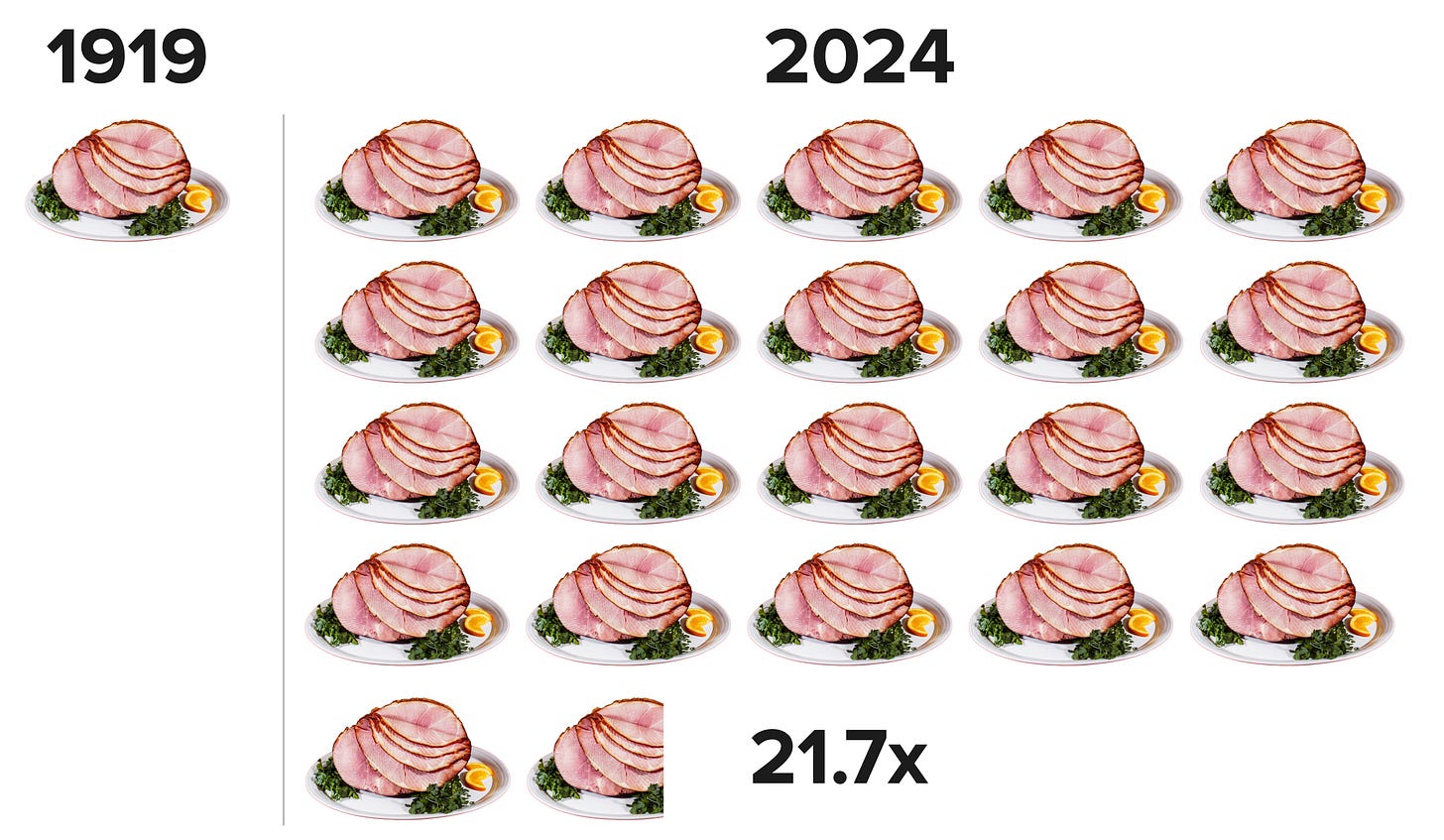Hamabundance
Since 1919 the time price of ham has fallen 95.3 percent. For the time it took to earn the money to buy one pound of ham in 1919, you get 21.7 pounds today.
It’s that season again: Costco’s spiral sliced ham is on sale for $2.29 a pound. Around our house we call it the Hamolidays. Today blue collar workers are earning $37.50 an hour in compensation (wages and benefits). This means it takes 3.7 minutes of work to earn the money to buy one pound of ham ($2.29 ÷ $37.50 = .06 hours = 3.7 minutes).
Back in 1919 ham was only 57 cents a pound but blue collar workers were only earning 43 cents an hour. This was a time price of an hour and 20 minutes per pound ($0.57 ÷ $0.43 = 1.33 hours = 80 minutes).
Things used to cost less in money but they were much more expensive in time required to earn the money to buy them. Remember to always compare prices to hourly wages to get the time price, which is the true price. Then compare the time price, over time, to see if things are getting more or less abundant.
Going from 80 minutes to 3.7 minutes is a 95.3 percent drop in the time price. If you divide the 1919 time price of 80 minutes by the 2024 time price of 3.7 minutes you get an abundance multiplier of 21.7. If you spent 80 minutes working today, you would earn enough to buy 21.7 pounds of ham, an increase of 2,070.7 percent.
In 1919 the U.S. population was around 105 million. Today it’s closer to 335 million, or 219 percent higher. For every one percent increase in U.S. population, ham abundance increased by 9.45 percent (2,070.7% ÷ 219%). Enjoy the Superabundance of hamolidays my fellow Americans.
Tip of the Hat: Scott Lincicome
Please consider enjoying our new course on the Economics of Human Flourishing at the Peterson Academy.
We explain and give hundreds of examples why more people with freedom means much more resource abundances for everyone in our book, Superabundance, available at Amazon.
Gale Pooley is a Senior Fellow at the Discovery Institute and a board member at Human Progress.





